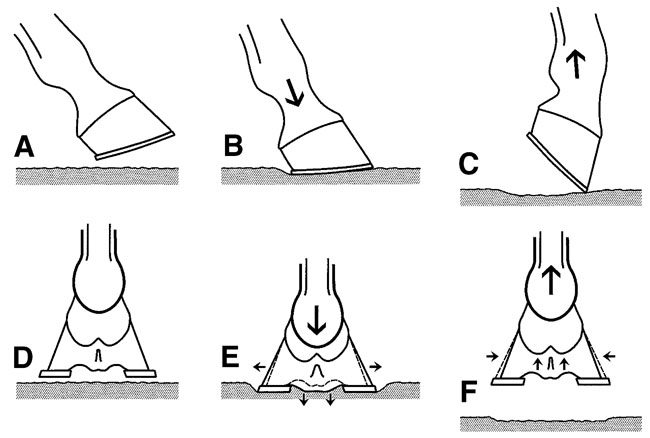American Farriers Journal
American Farriers Journal is the “hands-on” magazine for professional farriers, equine veterinarians and horse care product and service buyers.

HOOF EXPANSION. Figures A and D are side and lateral views of the unloaded hoof before it comes in contact with the ground. Figures B and E show the hoof loading as it comes into contact with the ground. The frog and sole descend, contact the ground and the hoof expands. As dirt fills the posterior of the foot, the heels and walls move outward. After breakover, as the foot again leaves the ground, the frog and sole resume the unloaded position and the foot closes.
Editor’s Note: The author, a California farrier, wrote this article in response to the article, “Physiological Trimming Theory Is Working,” that appeared in the American Farriers Journal, May/June, 2003 issue. That article reported on the trimming methods developed by Dr. Robert Bowker, an equine veterinarian who is the director of the Equine Foot Laboratory at the College of Veterinary Medicine at Michigan State University in East Lansing, Mich.
Today’s researchers need to ask themselves a few basic questions: